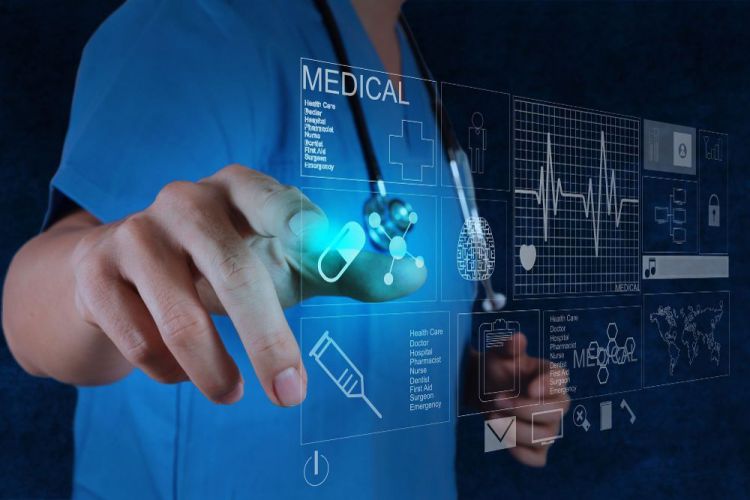 In today’s rapidly advancing world, innovative technologies have taken the wheel and transformed the healthcare landscape. Hospitals are embracing groundbreaking solutions that enhance patient care and revolutionize medical practices. Along with that, these technologies also improve efficiency and allow new avenues for medical discovery.
In today’s rapidly advancing world, innovative technologies have taken the wheel and transformed the healthcare landscape. Hospitals are embracing groundbreaking solutions that enhance patient care and revolutionize medical practices. Along with that, these technologies also improve efficiency and allow new avenues for medical discovery.
These innovative technologies reshape the way hospitals operate, from cutting-edge robotics and artificial intelligence to virtual environments. These innovative technologies are making their way into the future of advanced and patient-centric healthcare systems.
In this article, we will explore some of the most exciting and impactful technologies that are helping hospitals redefine medical boundaries and bring in a new era of medical innovation.
Let’s get started!
1. Robotics
Robotics has emerged as a transformative and innovative technology in the healthcare sector. It has revolutionized patient care and medical practices. With the precision of robotic systems, complex surgeries are now performed with enhanced accuracy and minimal invasiveness.
Moreover, robotic-assisted surgeries offer surgeons greater control and visualization, improving patient outcomes. It also reduces complications and faster recovery time.
Besides surgical applications, robotics are even used in rehabilitation and physical therapy. These robotic systems provide targeted support, personalized therapy, and real-time feedback that empowers patients on their recovery journey.
2. Mixed Reality
Mixed reality is another groundbreaking and innovative technology reshaping the healthcare sector. By blending virtual and augmented reality, mixed reality allows doctors to visualize and manipulate medical data in three-dimensional space. It improves the efficiency of diagnostics, treatment planning, and surgical procedures.
Moreover, with mixed reality, surgeons can overlay virtual images onto the patient’s body during surgery, enhancing precision and accuracy. Mixed reality is also used for medical training, providing realistic simulations and virtual environments to students, enabling them to practice procedures and gain experience in a safe and controlled setting.
Moreover, mixed reality also allows telemedicine and remote consultations. It lets healthcare providers interact with patients virtually, improving access to care in remote areas.
3. Electronic Health Records
Electronic Health Records (EHR) is changing how patient information is stored, accessed, and shared. EHT systems are replacing traditional paper-based records with digital platforms, letting doctors maintain comprehensive and secure patient data.
Like an A-rating on your energy performance certificate, EHR has gained a five-star reputation across the globe and has opened the doors for smoother operations. It not only allows for quick and easy access to patient information, but also improves efficiency, accuracy, and coordination among healthcare professionals. With EHRs, it is easy to access medical histories, test results, medication, treatment plans and more, allowing informed decision-making and enhanced patient safety.
Furthermore, EHRs enable seamless communication and collaboration among healthcare providers across different settings. Authorized personnel can securely access and update patient records, ensuring that accurate and updated information is always available.
4. 3D Printing
3D printing offers limitless possibilities in patient care, medical research, and personalized medicine. This cutting-edge technology allows doctors to create of precise and customized 3D models, implants, prosthetics and replicas.
In surgical planning, 3D printing allows surgeons to examine patient-specific models, facilitating preoperative analysis and improving surgical results. The ability to create patient-specific implants and prosthetics enhances their fit and functionality, providing individuals with better quality of life.
Other than that, 3D printing is also used to create detailed and fine structures. These structures include organ models and tissue scaffolds for studying diseases, testing new drugs and developing new treatment methods.
5. Artificial Intelligence
Artificial intelligence has changed how medical data is analyzed, diagnoses are made, and patient care is delivered. AI algorithms and machine learning models can analyse vast amounts of medical data. They analyze data like patient records, medical images, and research papers and provide valuable insights.
In addition to this, AI-powered systems can assist healthcare providers in clinical decision-making by offering evidence-based recommendations and treatment guidelines. AI algorithms can also predict patient outcomes, identify potential risks and assist in personalized treatment.
Besides that, AI also helps healthcare providers process and analyze data at a speed and scale that is humanly impossible. With AI, it becomes easier to make more informed decisions, reduce errors and improve overall patient safety.
To Sum It Up
Innovative technologies have catalyzed hospital transformation, revolutionising patient care, medical practices, and operational efficiency. The technologies mentioned earlier enhance surgical planning, medical training, and patient education.
These innovative technologies enable healthcare experts to make more accurate diagnoses, perform minimally invasive surgeries and provide personalized treatment.
As hospitals continue to embrace and harness the power of these innovative technologies, the future of healthcare holds immense promise. These technologies and new upcoming ones will continue to reshape the healthcare sector and create a sustainable healthcare system.




